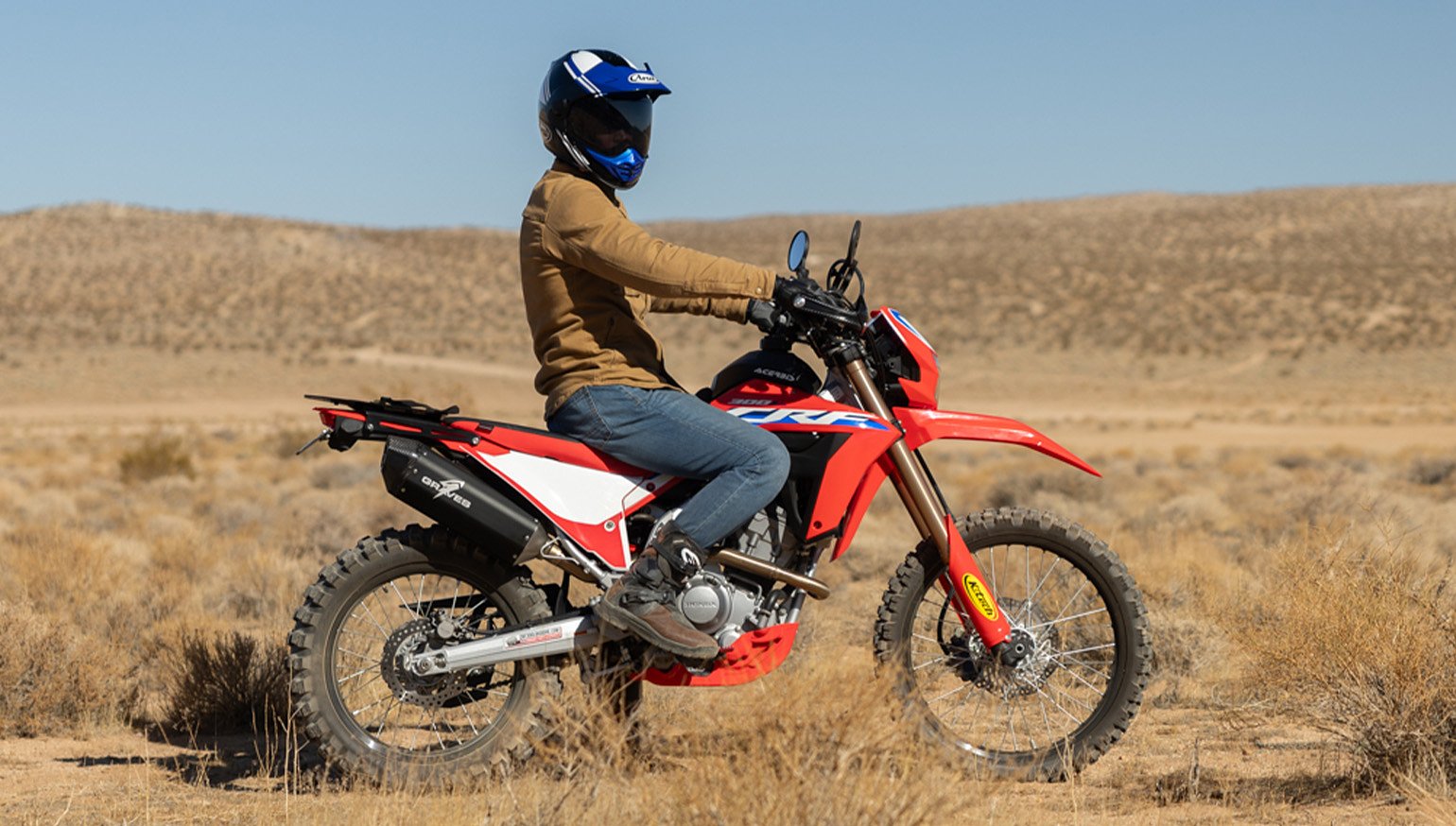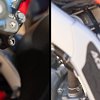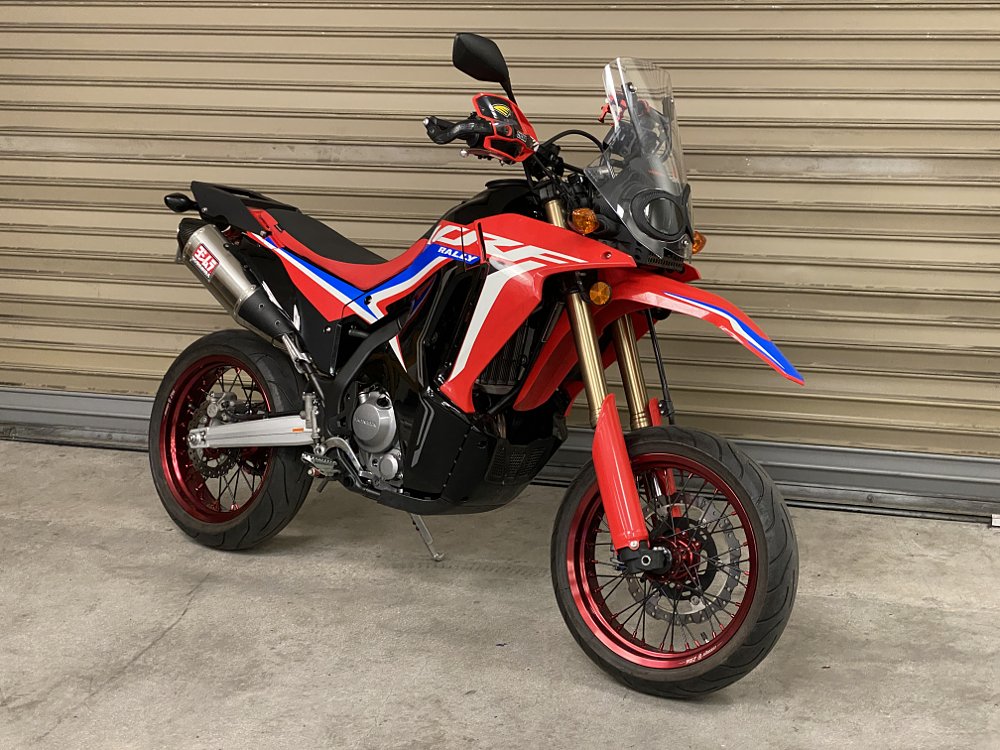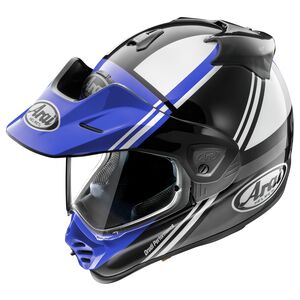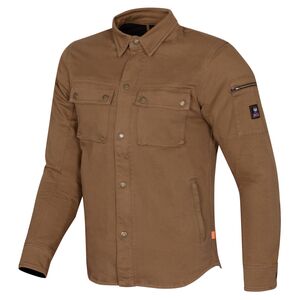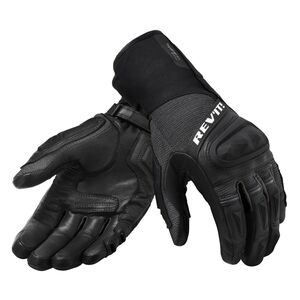If you replace all the planks of a ship, is it the same ship or is it something entirely different? That’s the question the Theseus Paradox begs. If no original parts remain, is the ship of Theseus still the ship of Theseus?
Some would argue yes. Others could contend otherwise. I can’t — scratch that — I won’t pretend to know the answer to such weighty conundrums. All I know is that I’m reminded of the ship of Theseus when I ride the Honda CRF300L of one Ari Henning.
Plank by plank
Honda’s CRF300L is well loved for several reasons. One, it's affordable. At $5,499, it’s a bargain every day of the week and twice on Tuesdays. Two, it’s reliable, with over a decade of development and Big Red build quality backing it. Three, it's friendly. That’s thanks to marshmallow-soft suspension, squishy brakes, and a power curve as gradual as a boat ramp. Ari challenges all three of those qualities with his CRF build.
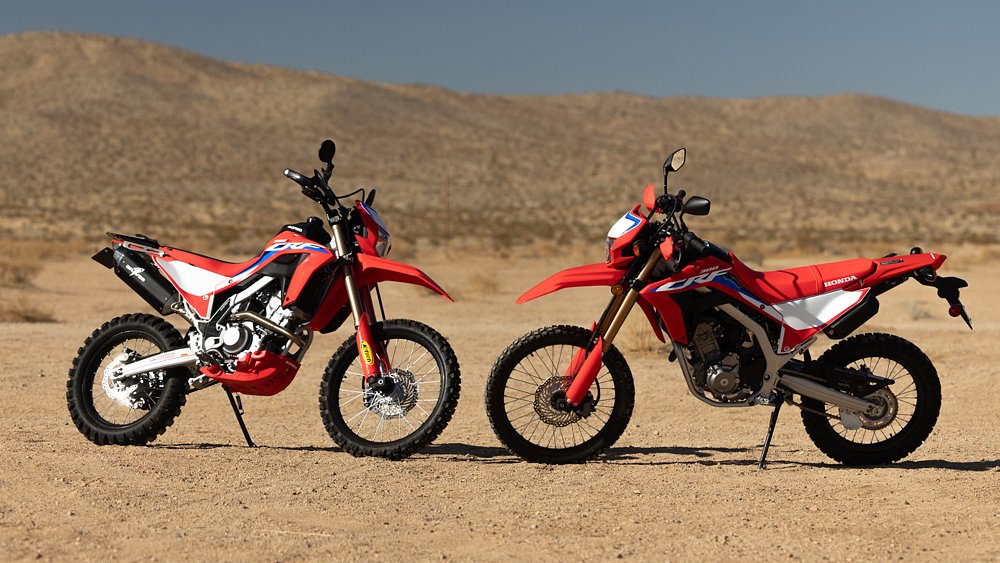
Before we unpack all that, come take a quick detour with me. At the beginning of the Golden Globe-winning film "A Different Man," a random side character proclaims, “All unhappiness in life comes from not accepting what is.” As wise as those words sound, that character obviously never wrenched on a motorcycle. Otherwise, they’d know that happiness also comes from fixing what is. That was precisely Ari’s intent with the CRF300L platform.
According to Mister TSM himself, Honda’s little dualie has the potential to “do everything from commuting to ADV-style touring to single-track to BDR excursions.” There’s just one stipulation in the fine print. It takes a shipping container worth of aftermarket parts to turn it into that do-everything “unicorn.” Ari left no stone and no bolt unturned in that quest.
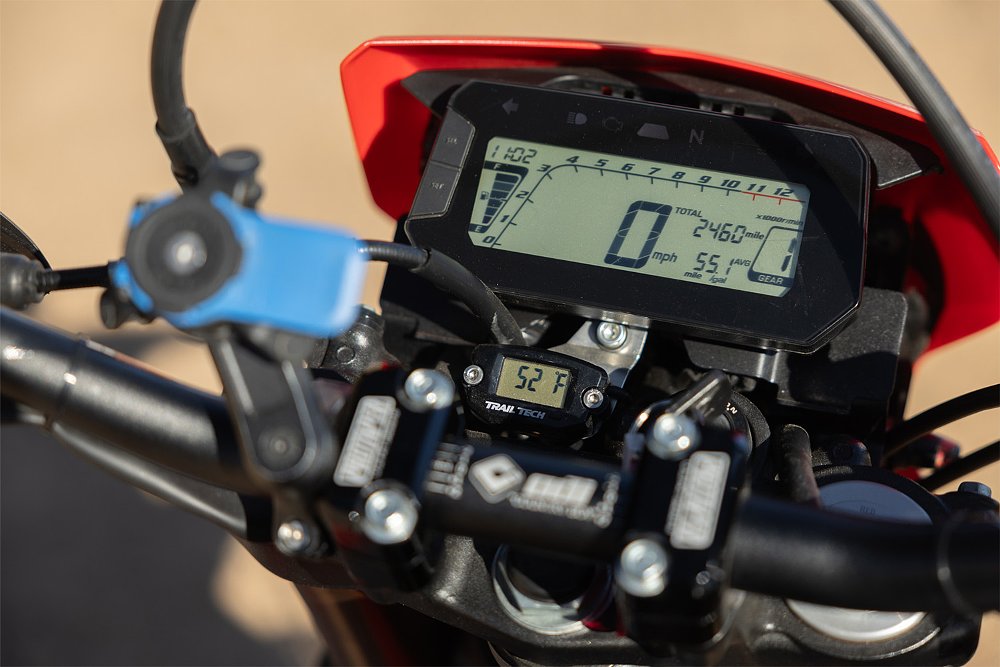
Pro-Taper mounts, ODI bars, and Double-Take mirrors present clear trail-going advantages over the stock setup. So do “wider, grippier” footpegs, a plusher perch, and forged aluminum shift and brake pedals. The Acerbis skid plate, handguards, and frame guards up the protective profile while a 3.6-gallon tank adds 1.5 gallons of fuel capacity to the diminutive dual-sport. Still, none of those bits and bobs are as transformative as the engine and suspension upgrades.
Let’s start with the 286 cc lump, shall we? To turn that thumper into a true 300, Ari leveraged engine mods he himself developed during his CBR300R racing days. At the top of that list is a 301 cc big bore kit, which pushed the cylinder diameter to 78 mm and the compression ratio to 11.5:1. Extracting significant power from that kit also necessitated a full exhaust system, high-flow velocity stack, Twin Air filter, ECU flash, and CBR300R cams. Toss in a set of Zeta plugs and you’re cutting a check of $2,379 for engine mods alone.
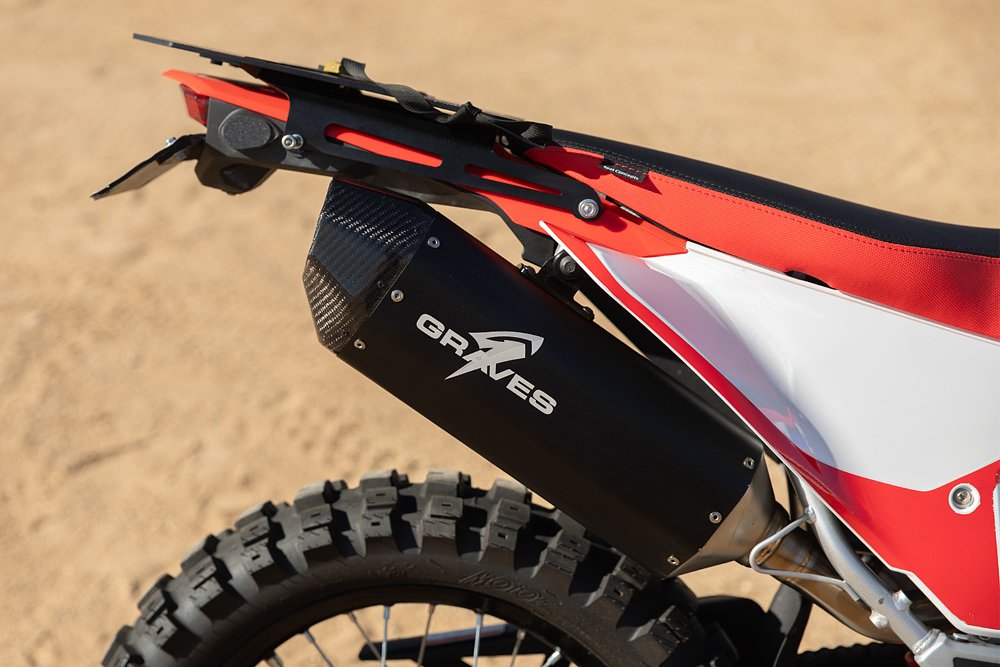
Overhauling the suspension required nearly as much moolah. Honda outfits the CRF300L with a non-adjustable front end from the factory. K-Tech drop-in fork cartridges and springs fix that budget build with preload, compression, and rebound adjustability. The rear end now benefits from a K-Tech shock, which features a weight-specific spring as well as preload and rebound adjustments. Round out that package with a set of Motoz Tractionator Rallz tires and you have a dirt-worthy setup. What you also have is a $1,863 tab.
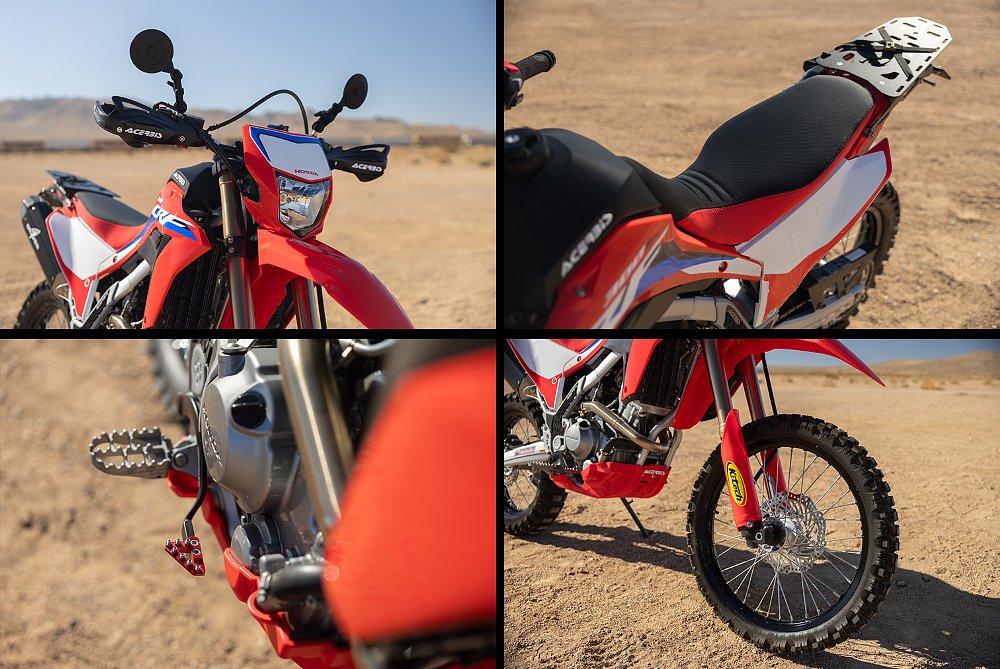
When you sum up all the add-ons, Ari’s upgrades come out to $6,331. Yes, that’s more than the bike itself — by a considerable measure. If we’re counting beans here, that’s $832 over the 2024 model’s price tag and $1,082 more than Ari’s own 2021 CRF. In total (MSRP plus the cost of modifications), the build is worth $11,580. Of course, that doesn't include the cost of labor, as Ari handled much of that himself. Ari did all the work himself and, including engine work, suspension, and other parts, and estimated he had 16 to 18 hours in. So if turning a wrench isn't your thing, expect an additional expense for labor.
I can hear it now. “Why would I sink that much money into a 300 when I can buy a Yamaha Ténéré 700 for that price?” Here’s the thing, if that sounds like you, you’re not wrong. It’s a lot of money to invest in a beginner bike, especially if the horsepower-per-dollar ratio informs your purchasing decisions.

What’s easy to overlook is that a healthy percentage of CRF300L customers turn to the platform after riding full- and mid-sized ADVs for years. Those who value low curb weights and reliability, but still demand a modicum of performance, understand the appeal. It’s a slender overlap in the Venn Diagram, no doubt. That doesn’t mean it isn’t a viable option for a subset of people. That’s only more evident after riding it.
Through rough seas
Out of the box, the CRF300L is about as placid as a Tibetan monk. Acceleration is maddeningly mild. Braking is geriatric gentle. Damping is downright doughy. None of those qualities can be attributed to the Ari-spec CRF. Its bored-out block pushes 31.5 horsepower (at 7,900 rpm) and 22.4 foot-pounds of torque (at 6,300 rpm) through the rear tire. That performance boost is evident upon the first throttle crack. It’s lively, it’s raucous, but more importantly, it’s immediate, with any and every twitch of the wrist instantaneously and accurately transferred to the rear wheel.
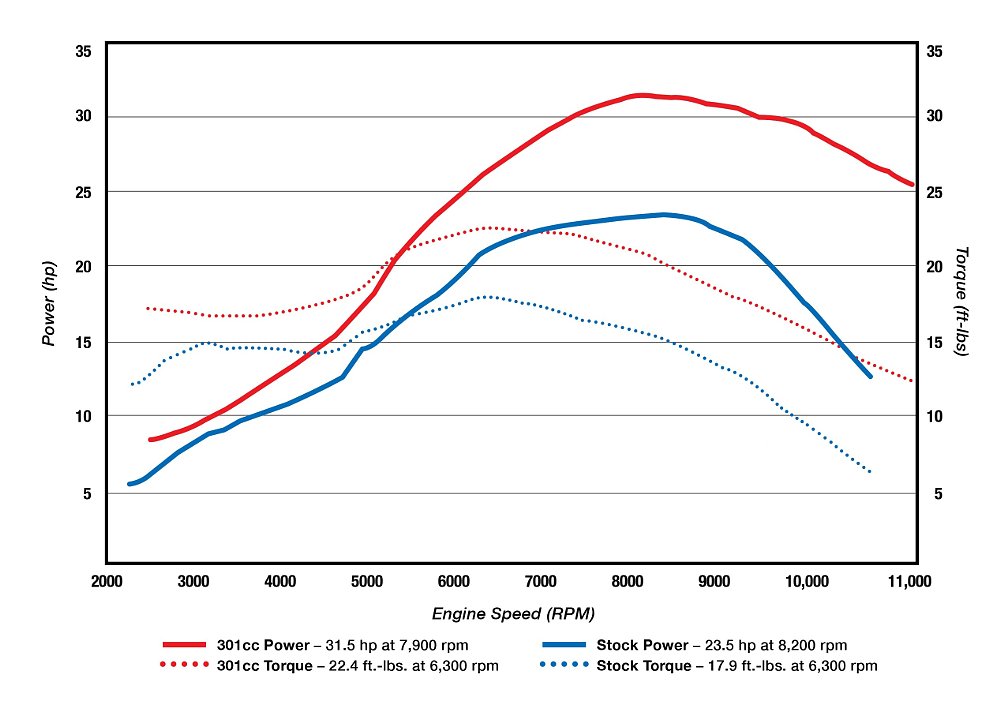
While the power increase was valuable both on- and off-road, that added oomph was most beneficial on the pavement. The super slab, more specifically. Southern California freeways, can swallow you whole. That’s especially true if your vehicle is lacking in the acceleration department. A stock CRF300L meets that criteria. Ari’s bike suffers from no such issue, though.
Not only is the throttle response crisp and direct, which eases merging and accelerating out of trouble, but a 15-tooth (+1 tooth over stock) countershaft sprocket warrants taller gearing for highway speeds. Sure, the engine’s extra performance comes in handy in nearly all situations, but the 300L's fatal flaw is its Interstate presence. That’s why Ari’s mods are so valuable in that arena. Unfortunately, they can’t heal all the CRF’s high-speed deficiencies.
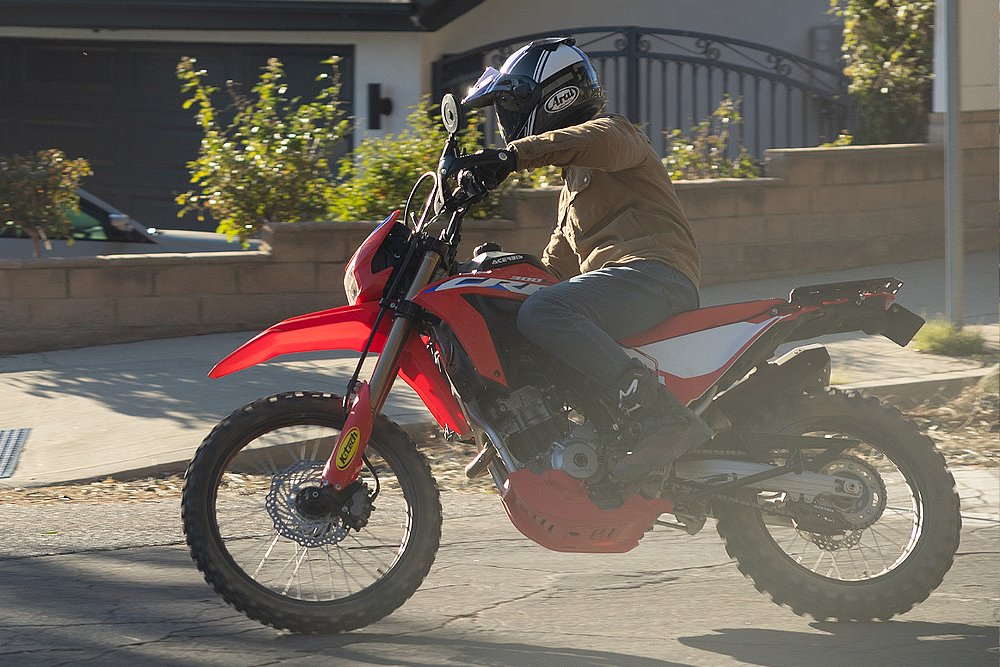
The stocker has no problem reaching freeway pace. Maintaining it is another matter. By 70 mph, the 300L develops a case of the wobbles. There’s headshake up front and squirming tires out back. Neither inspires confidence. Neither are completely remedied by Ari’s chassis upgrades, either. They merely lift the CRF's wobble threshold by a few miles per hour. Mind you, that’s in a straight line on the ideal surface. Add highway grooves, tar snakes, or lean angle to the equation and the jitters return in force.
Because I tested the components as a package deal, I can't blame one single component with absolute certainty. However, I wouldn't be surprised if the 80% off-road/20% on-road tires were a contributing factor. The dual-sport rubber may not cure all the chassis’ limitations, but it proves its worth out on the trail. Two features characterize Ridgecrest, California’s Football Field OHV: whoops and sand. If you’re lucky, you’ll encounter sections that are heavy in both. Oh, joy. That’s where the stock CRF — right on cue — loses its composure.
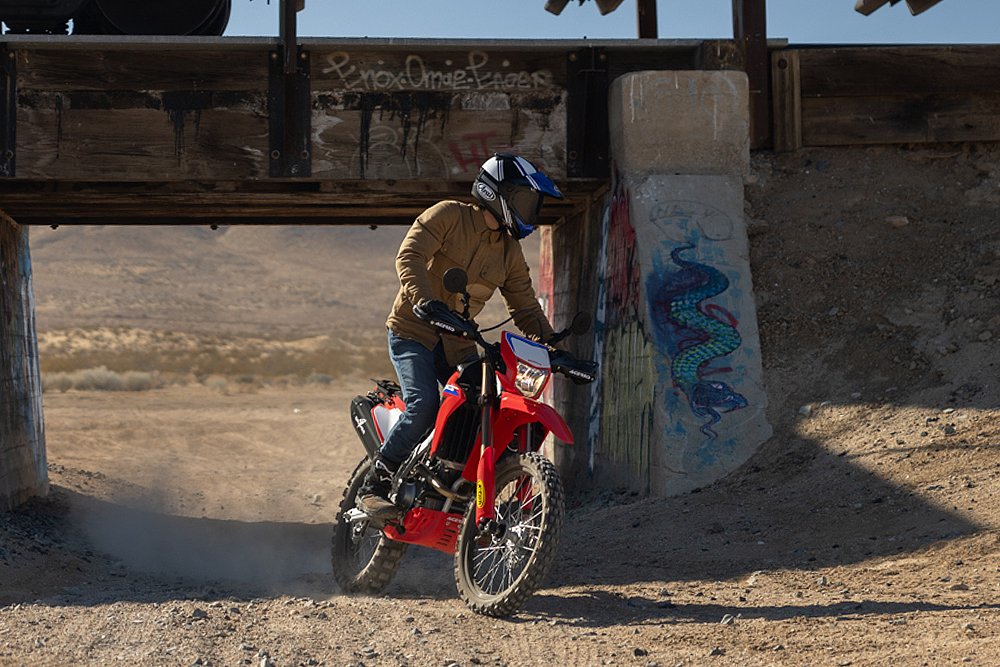
Ride up the face of a whoop and the fork collapses. Roll down the other side and the wheel drops away. It only blows back through its travel at the whoop’s bottom. Then, that built-up energy rebounds back at you on the next whoop face. It's like riding a rocking horse up a StairMaster. Hit several whoops in succession and front the deflects. Add steering input and the rear kicks out. The more you push it, the more it rebels. The faster you go, the harder it fights.
The K-Tech suspenders exhibit none of that defiant behavior. That’s why the Ari-spec CRF made light work of the same set of whoops. The more you push it, the more it complies. The faster you go, the easier it gets. Find the right pace, the right rhythm, the right pocket, and the chassis does all the work, right under you. At times, I felt like I was just along for the ride. It was just as competent in everything from sand washes to rock gardens to hill climbs.
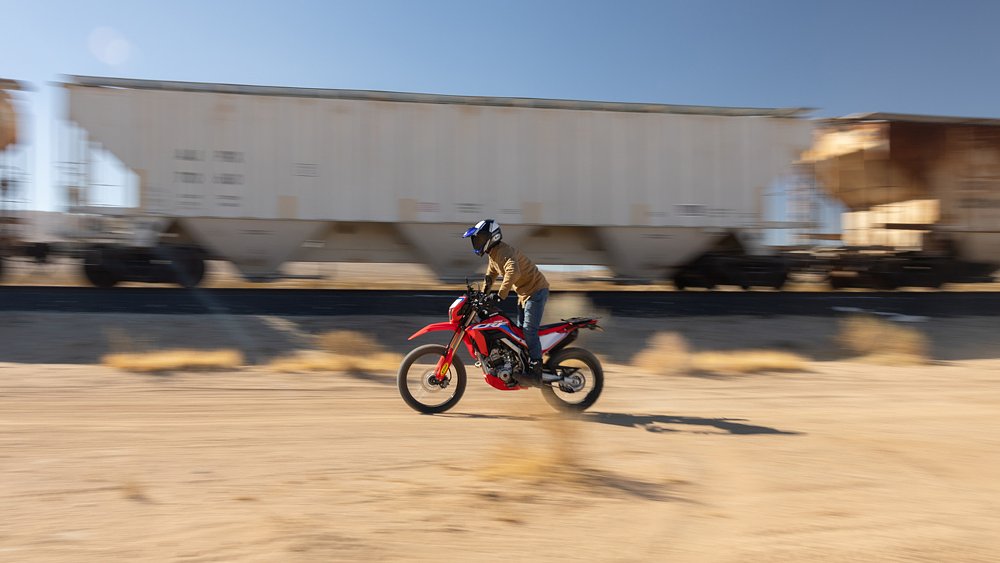
If there are two complaints repeatedly hurled at the CRF300L, it’s that it’s underpowered and undersprung. Ari sought out remedies for those deficiencies, and for the most part, he was successful. After all the mods, after all the man-hours, after spending more on parts than the bike itself, the question still remains: Is it the same CRF or is it something entirely different?
When my ship comes in
To the naked eye, Ari’s CRF300L doesn’t look all that different from the floor model. In some respects, it’s the same CRF, and in others, it’s something entirely different. It’s both and neither. Behind those Acerbis hand guards and K-Tech suspenders, behind those CBR cams and IMS foot pegs, still lives the soul of the CRF. After all, you can replace every plank on a ship, but to a large degree, it still sails the same.
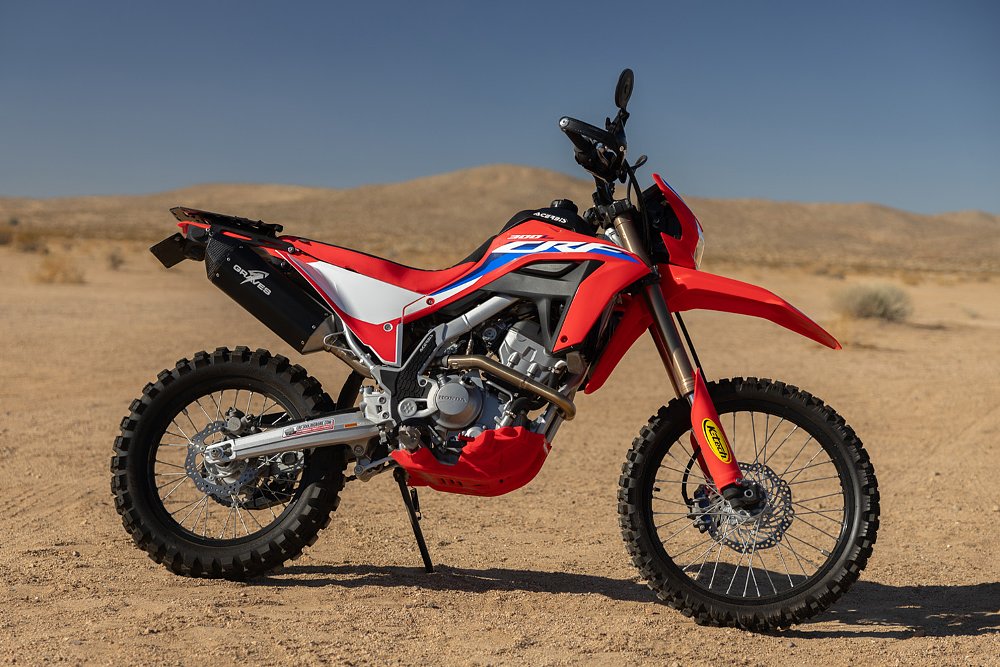
That’s the case with Ari’s CRF. Its engine produces more power but with none of the maintenance requirements of a “purebred 450/500 [cc].” Its re-tooled suspension zigs where you zig, but at Interstate speeds, it still zags unwantedly. It’s a clear upgrade on the platform, all without sacrificing its spirit.
Isn’t that what drives most owners to modify their motorcycle? They don’t want something entirely different. They just want the best version of that motorcycle, for them. That’s what makes it the CRF of Peter, the CRF of Terence, the CRF of Melissa. That much is clear after riding Ari’s bike. In the end, the planks you replace are up to you.
| Ari's 2021 Honda CRF300L | |
|---|---|
| Price | $5,249 (MSRP 2021), $11,580 (as tested) |
| Engine | 301 cc, liquid-cooled, four-valve, single cylinder |
|
Transmission, final drive |
Six-speed, chain |
| Measured horsepower | 31.5 @ 7,900 rpm |
| Measured torque | 22.4 foot-pounds @ 6,300 rpm |
| Frame | Steel tube semi-double cradle |
| Front suspension | Showa 43 mm fork with K-Tech springs and cartridges, adjustable for spring preload, compression, and rebound damping; 10.2 inches of travel |
| Rear suspension | K-Tech shock, adjustable for spring preload and rebound damping; 10.2 inches of travel |
| Front brake | Single Nissin two-piston caliper, 256 mm disc (no ABS) |
| Rear brake | Nissin single-piston caliper, 200 mm disc (no ABS) |
| Rake, trail | 27.3 degrees, 4.3 inches |
| Wheelbase | 57.2 inches |
| Seat height | 34.7 inches |
| Fuel capacity | 3.6 gallons |
| Tires | Motoz Tractionator Rallz, 90/90-21 front, 120/90-18 rear |
| Measured weight | 305 pounds |
| Available | Now |
| Warranty | 24 months |
| More info | powersports.honda.com |

 Membership
Membership

